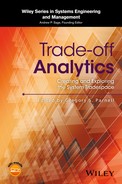Foreword
Though many may not recognize it as such, we live in the systems age. Those engaged with systems engineering understand the challenges and opportunities of today and tomorrow are truly systems challenges. On the grand scale, we must address clean energy, clean water, food, resource allocation, health care, and more. None would argue that these are systems engineering challenges, but they are systems challenges indeed. On a somewhat smaller scale, we see unprecedented opportunities fueled by the ever-increasing rate of technology infusion and the opportunity to connect existing systems in new and novel ways. Our stakeholders demand more from us, and technology allows us to deliver: end-to-end connected transportation enabled by autonomous vehicles; new efficiencies in energy generation, storage, and distribution unlocked by new sensor technologies and insights from big data; innovations in personal health care through wearables and other technologies.
Scientists, architects, specialists, and engineers of all types collaborate in a wide range of complicated and often complex situations to address issues and deliver against stakeholder demands with upgraded and innovative systems. As Randy Pausch reminded us in The Last Lecture, “engineering is not about perfect solutions, it's about doing the best you can with limited resources.” In this quest to serve our customers and stakeholders, the fundamental purpose of systems engineering is neither process, enabler, specification, nor any other tool or artifact. Systems engineering is charged with delivering the required value in an effective and efficient manner, making the best possible use of the resources available. In doing so, making the inevitable trade-offs should not be treated as a necessary evil. Informed trade-offs based on appropriate analysis properly performed are a critical enabler delivering the required value efficiently and effectively. They are a key tool in our systems engineering toolbox – one that we must embrace and improve.
Systems engineering and all those who practice it are connectors, and connecting diverse approaches across multiple perspectives requires these trade-offs, both large and small. In connecting processes and analytics to properly understand the true problem and architect the right solution, what processes do we select and what level of fidelity do we pursue to balance investment made with value delivered? In assessing both the problem space and the possible solution space, how do we prioritize the “right” blend of desires, constraints, approaches, technologies, and specialties necessary to solve the problem within the bounds of capability, schedule, and budget? Looking to the evolution of the environment and our solution, what resilience and adaptability must we account for and what range of sensitivity can we accept?
As we continue to embrace and expand systems practices across diverse communities, our problems move from the complicated to the complex. We engage an even broader range of subject matter experts with their particular perspectives, tools, and techniques. We have greater technical, economic, and social considerations as we address both bounded problems with defined requirements and fuzzy problems characterized by market behaviors and stakeholder concerns. As the scope continues to expand, these questions become more challenging. Properly performing trade-off analysis from problem definition through ultimate solution delivery becomes even more critical.
In this text, Parnell et al. bring together in a systems engineering context the fundamental foundations, the processes and principles, the techniques and examples necessary to help us perform better trade-off analyses. They recognize the broad scope including cost, value, schedule, and risk drivers and provide tools to deal with the inherent uncertainty within which systems engineers operate. Put simply, Parnell and his colleagues provide a complete and cohesive treatment of this critical enabler for systems engineering, moving us from sometimes disjoint, ad hoc approaches to an informed, disciplined approach to explicitly define our decision opportunities and alternatives in the journey to making better decisions.
As we connect teams and technologies to better meet stakeholder needs in an ever-evolving environment, it is not a question of whether or not we perform trade-off analysis. It is a question of how well we do so: whether we make errors of omission and commission, whether we are implicit or explicit, whether we rely on unsound approaches or informed practices. All those who practice systems engineering serve as the “guardians of why,” balancing multiple options and considerations as we collaborate with others to match the right solution to the real problem. Through informed trade-off analysis, we better leverage the talents, techniques, insights, and perspectives of those around us, ultimately driving better decisions and enabling the delivery of systems to meet the diverse and complex challenges of today and tomorrow.
David Long
President, Vitech Corporation
INCOSE President (2014 & 2015)
